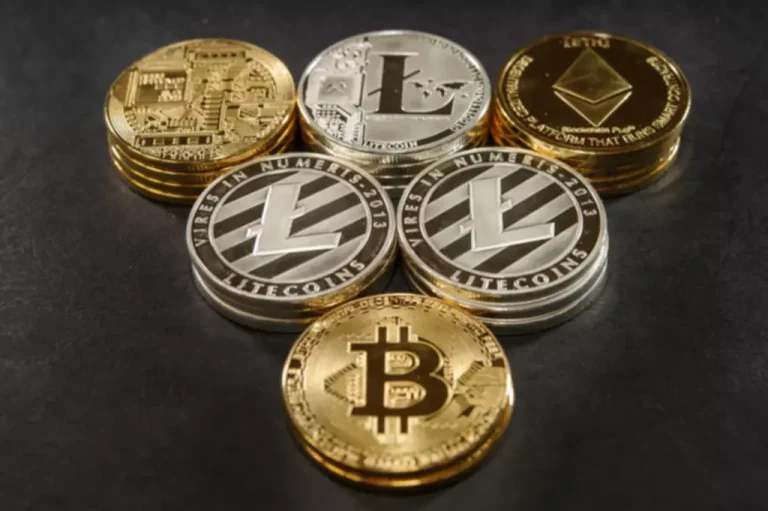The ability to transfer belongings to chains with reduced expenses for particular transactions is one way that cross-chain bridges can scale back transaction prices. Businesses aiming to limit their working expenses and high-frequency traders might profit from this cost-effectiveness. Make use of a mechanism that locks down belongings from one blockchain in a sensible contract and points similar wrapped tokens on another blockchain. The core is important to implement the runtime layer, which is a layer responsible for executing good contracts and preserving the actions of the users. There is best freedom obtainable on the substrate core and it aligns nicely with the substrate ecosystem. The important half is to observe how do crypto bridges work the guiding principles of Substrate’s block technology and WebAssembly (WASM).
How Ccip Is Being Built To Enable Secure Cross-chain Bridging

They permit functions constructed on one blockchain network to leverage the functionalities and belongings of another community. This part will discover the workings of blockchain bridges and their significance within the blockchain neighborhood. With a Blockchain Certification Course, you’ll be able to unlock a extensive array of exciting job opportunities within the quickly rising blockchain industry. Graduates of this course can pursue roles corresponding to Blockchain Developer, Smart Contract Developer, Blockchain Architect, Cryptocurrency Developer, and Blockchain Consultant.
Breaking Down The Limitations: Benefits Of Interoperability
Our case research reflect our versatile method and our relentless pursuit of excellence in connecting the blockchain world. Blaize has prepared a complete guide on cross-chain interoperability, explaining its execs and cons and considering several real-life examples. Imagine holding ETH but discovering a profitable DeFi yield farming opportunity on the Polygon network.
Cloud Price Administration: Optimizing Investments For Ceos, Cfos, And Ctos
This makes blockchain interoperability very important so as to understand the total potential of a multi-chain ecosystem. The backbone of blockchain interoperability is cross-chain messaging protocols, which enable smart contracts to learn and write data to and from different blockchains. A blockchain bridge operates by either using a Wrapped Asset Method or a Liquidity Pool Method. The Wrapped Asset Method includes representing an asset from one blockchain as a token on another blockchain, maintaining its original worth. This token can then be transferred throughout the bridge and ‘unwrapped’ again into the unique asset.
Advantages Of Our Cross-chain Bridge Development
These bridges play a vital position in enhancing the interoperability and coherence of Blockchain ecosystems, thereby bettering the overall system by assuaging community congestion. Both trustworthy and trustless platforms have design faults that jeopardise the blockchain bridge’s safety in several ways. There could additionally be elementary or technical flaws in both trusted and trustless methods.
Seeing Interoperability In Motion
The remaining Ethereum is burned, and a corresponding amount is transferred to your pockets. Alternatively, performing the identical task without a bridge necessitates changing Bitcoin to Ethereum on an change, withdrawing the amount to your wallet, and subsequently depositing it onto another exchange. Blockchain Magazine, an impartial platform, covers and publishes blockchain information, insights, evaluation, research and evaluate.
Users now have extra choices and freedom when buying and selling different currencies thanks to this. To reap the benefits of the advantages of quite a few techniques, combine elements of relayed bridges, federated, wrapped assets, and atomic swap. One of the founders of Ethereum, Gavin Wood, has developed a framework generally identified as substrate to facilitate blockchain improvement shortly. With more than a hundred and fifty initiatives on the substrate, deploying the blockchain in a corporation has by no means been easier. To create WBTC tokens, users can deposit their Bitcoin with the custodian, who then mints an equivalent amount of WBTC tokens on the Ethereum blockchain.
- Multichain custodial bridges are helpful for easy ERC20-like tokens since they do not require liquidity on every blockchain.
- These methods vary but primarily embrace the Wrapped Asset Method and the Liquidity Pool Method.
- A cross-chain bridge usually includes locking or burning tokens on the supply chain by way of a smart contract and unlocking or minting tokens by way of another smart contract on the vacation spot chain.
- Each member has a key to the system’s multi-signature pockets, which keeps it protected.
- Cross-chain communication inherently requires safety, trust, or flexibility trade-offs that aren’t required for interactions that happen on a single blockchain.
Instead of merely connecting blockchains, chain abstraction abstracts away the complexities of interacting with multiple chains. It permits customers and developers to work with blockchain networks through a unified interface, whatever the underlying know-how. This means users don’t need to understand the technical details of every blockchain they work together with; they can simply carry out their desired actions, and the abstraction layer handles the remainder. As Distributed Ledger know-how has developed, so too has the significance of clean interoperability across many platforms. Cross-chain bridges and interoperability protocols, which operate as bridges between numerous techniques, fulfill this want. With the assistance of interchain bridges, customers can access a spread of services and join numerous systems by facilitating the straightforward transfer of tokens and information between blockchains.

Typically, the additional alongside the spectrum a cross-chain answer strikes toward trust-minimization, the more computationally costly, less versatile, and fewer generalizable it becomes. These trade-offs are made in order to allow use instances that require the strongest trust-minimization guarantees. Similarly, by enabling distinct blockchains, scaling options, and app-specific chains to communicate, the ecosystem may benefit from each blockchain ecosystem’s individual qualities. Blockchains usually are not natively in a position to talk with each other—they commonly don’t have the flexibility to monitor or perceive what’s taking place on different networks. Each chain has its personal algorithm when it comes to protocol design, foreign money, programming language, governance construction, culture, and different components, making communication between chains tough.
Protocols once restricted to fundraising on Ethereum, like Hyperliquid and dYdX, can now migrate improvement to their own chains, fostering higher autonomy and tailored performance. Bridges seamlessly switch liquidity between chains, allowing these protocols to combine new blockchains and increase their person base while retaining important liquidity swimming pools. So, let’s embark on this journey to unravel the mysteries of blockchain interoperability and uncover how it can bridge the hole between chains, enabling seamless integration and fostering a connected blockchain ecosystem. These bridges use decentralized nodes and sensible contracts rather than a major authority to address transaction management.
Blockchains operate as distinct distributed networks that includes distinctive tokens, making the transfer of native belongings between them technically inconceivable. For example, the assets on Avalanche can’t be transferred to Solana because of the divergence of their ecosystems. All blockchains, however, have unique guidelines and consensus methods and evolve in closed contexts. This prevents them from interacting naturally and prevents tokens from transferring freely between blockchains. There are bridges that hyperlink blockchains, enabling the exchange of data and tokens between them.
This is where the demand for professionals with experience in blockchain administration turns into evident. Blockchain can get rid of intermediaries, which leads to price financial savings and better efficiency, as a elementary benefit. This disintermediation grabs a crucial spot in the disruption of current enterprise paradigms by blockchain. Through the usage of unique product IDs and NFC-enabled tags, customers might scan the merchandise and access detailed information about their origin, dealing with, and authenticity. This degree of transparency not solely increased client confidence but also enabled Walmart to effectively track and recall merchandise within the occasion of safety issues.
Read more about https://www.xcritical.in/ here.
